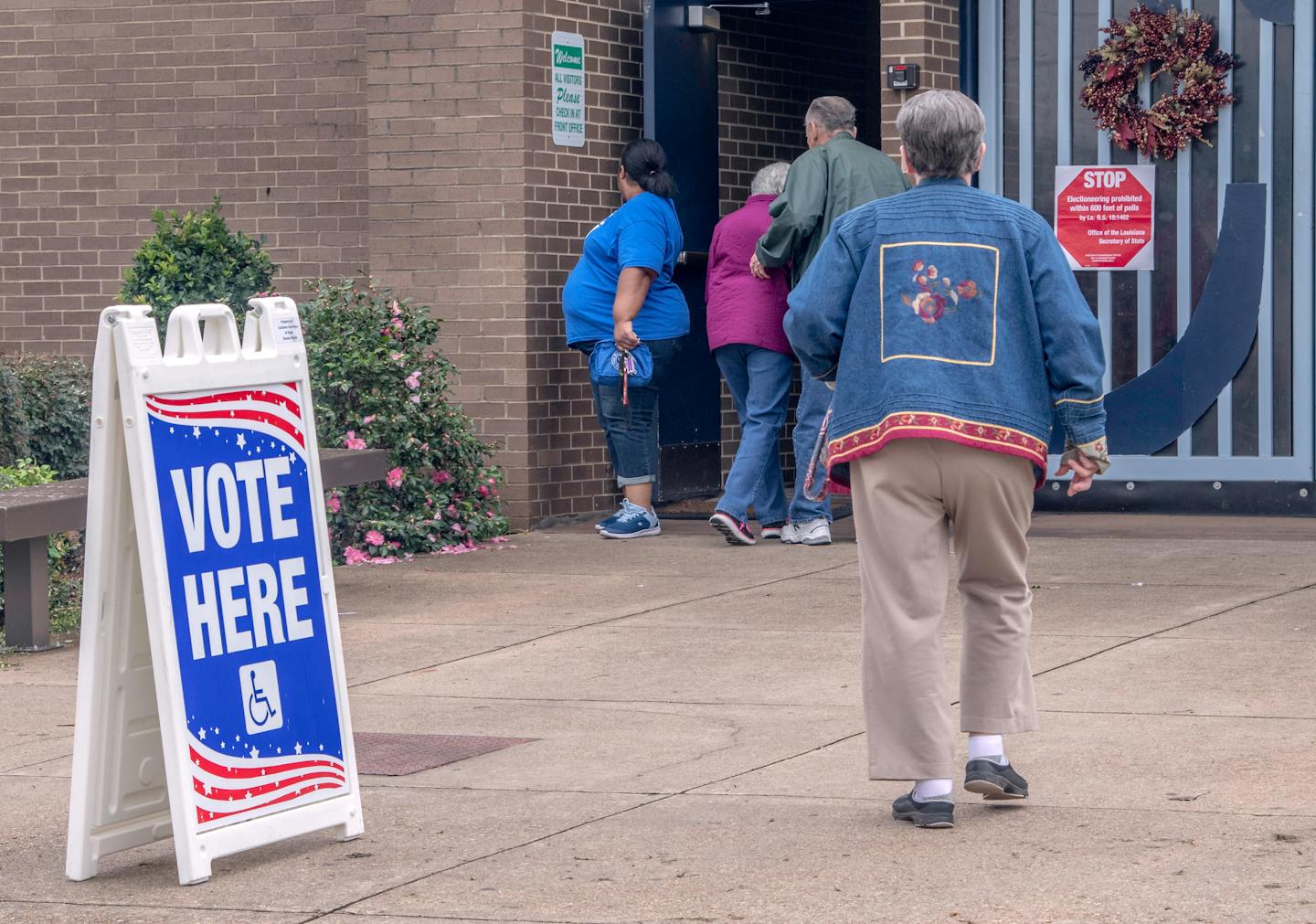Donald Trump is clearly concerned about the midterm elections that loom next November, which look to be a referendum on his administration. All seats in the House of Representatives will be up for grabs as will one-third of the Senate. Losing control of the House would severely crimp the US president’s ability to govern the way he has for the first nine months of his second term.
Trump has already voiced some unease about the election. In a recent interview with the One America News (OAN) network he stated: “The one thing that I worry about is that… I don’t have the numbers, but the person that wins the presidency always seems to lose the midterms”.
There’s a clue to the president’s apprehension about the numbers from the 2024 general election results. Despite winning the popular vote in 2024, the Republican vote in the House fell by 0.2 percentage points, as a result the GOP (the Republicans) lost two seats, leaving them with a majority of only five seats.
Trump knows from bitter experience what could happen if he loses control of the House. The Democrats made a net gain of 40 seats at the 2018 midterms after which the House impeached Trump twice.
So the president and his Maga coalition are well aware of how important it is to retain control of Congress.
The president is already taking steps that could tilt the midterms in his favour. Shortly after being sworn in as president in January 2025, he rescinded Joe Biden’s executive order that aimed to expand voting access and voter registration.
In April Trump ordered the Department of Justice to launch an investigation into the Democrats’ top fundraising platform ActBlue, after allegations it had allowed illegal campaign donations. The Democrats denounced the move as “Donald Trump’s latest front in his campaign to stamp out all political, electoral and ideological opposition”.
In August, Trump announced he wanted to ban mail-in-voting for the midterms. Three in every ten ballots cast in 2024 were mail-ins and are historically thought to favour the Democrats. But the US constitution mandates that the states control their elections. Congress has the power to pass legislation banning mail-ins for federal elections, but it is thought unlikely that such a measure would pass the Senate.
History has shown that the party occupying the White House usually performs poorly in the subsequent midterm elections. Three recent polls, Economist/YouGov, Morning Consult, and Emerson, show Democrats edging ahead in the generic congressional vote.
But precedent and political polling may count for little over the next year, as America’s democratic system is tested by extraordinary events and challenges.
Redistricting
There are already moves by mainly, though not exclusively, Republican controlled states to carve out additional congressional seats (referred to as redistricting) to bolster the party’s chances of retaining their majority in the House of Representatives. In three states – Texas, Missouri and North Carolina – Republican legislatures have redrawn constituency lines to the party’s electoral benefit, resulting in a notional seven new GOP-leaning congressional seats.

After the Republican-controlled North Carolina legislature voted through a new congressional map that may provide the party an additional seat in next year’s midterms, Trump posted on Truth Social that this provided the potential for “A HUGE VICTORY for our America First Agenda.”
Democrats have responded to these events by launching their own redistricting plans, with Virginia becoming the latest blue state to announce proposals to redraw electoral boundaries that could give the party two or three additional seats.
It is, however, the largest state in the union – California – which serves as the base for Democrats counterbalancing moves. California Governor Gavin Newsom is asking his state’s voters to decide on proposition 50. If passed this would authorise state lawmakers to create new electoral wards that could favour Democrats. Academic analysis has estimated that the move could provide up to five additional Democratic seats in Congress.
This action has been endorsed by former US president Barack Obama, who stated the Democrats strategy in California gives the national party a “chance… to create a level playing field” in next year’s elections.
Partisan gerrymandering is nothing new in US politics. But what is new, according to Benjamin Schneer, a Harvard-based expert in political representation, is the scale on which this is being done. He believes:
Gerrymandering can be done more effectively now because we have fine-grained data on the population and on how people are likely to vote, and computing techniques to design maps in clever ways. Put all that together with intense polarization and that creates a perfect storm where gerrymandering can flourish.
Voting rights
The 2026 midterms would also be affected in a seismic way by an impending Supreme Court decision relating to a central pillar of the 1965 Voting Rights Act (VRA). Section 2 of the act “prohibits voting practices or procedures that discriminate on the basis of race, colour, or membership in one of the language minority groups”. The court is now weighing whether Section 2 is constitutional.

The case relates to a lawsuit in Louisiana where it was required under the VRA to redraw its congressional map to ensure two majority black districts. This is now being challenged in the Supreme Court. If successful it could weaken the voting power of minorities and result in congressional districts being redrawn throughout the American south.
This would be a major blow for the Democrats. Analysis by the BBC projects that this could “flip more than a dozen seats from Democratic to Republican”. Findings from the Economist go further, suggesting “Republicans could eliminate as many as 19 Democrat-held districts in the House of Representatives, or 9% of the party’s current caucus.”
The 2026 midterms will be hugely consequential. They will decide what party controls the US Congress for Trump’s last two years in office and therefore the extent of his power until January 2029. They will also serve as the unofficial start of the 2028 presidential campaign and determine whether it is the Republicans or Democrats with the political momentum heading into this historic election.
This article is republished from The Conversation, a nonprofit, independent news organization bringing you facts and trustworthy analysis to help you make sense of our complex world. It was written by: Richard Hargy, Queen's University Belfast
Read more:
- Javier Milei’s victory in Argentina’s midterm elections is also a win for Trump
- Tit-for-tat gerrymandering wars won’t end soon – what happens in Texas and California doesn’t stay there
- 3 reasons Republicans’ redistricting power grab might backfire
Richard Hargy does not work for, consult, own shares in or receive funding from any company or organisation that would benefit from this article, and has disclosed no relevant affiliations beyond their academic appointment.


 The Conversation
The Conversation
 Associated Press US News
Associated Press US News America News
America News Raw Story
Raw Story AlterNet
AlterNet The Daily Beast
The Daily Beast The Babylon Bee
The Babylon Bee New York Post
New York Post